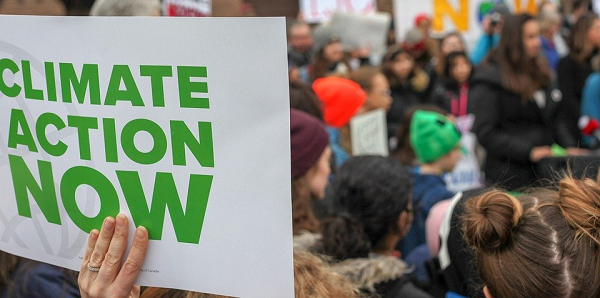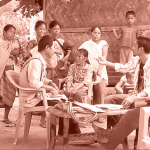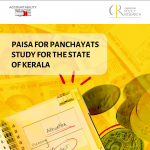
Policy and Activism from the Perspective of a Youth Activist
15 November 2019
Nina Möger Bengsston is a member of the Danish Youth Climate Council where she provides policy input to the Minister of Climate on topics related to transitioning to a sustainable economy. The 24-year-old has also initiated a global alliance to further formalise the involvement of youth in climate policy across 15 countries, both developed and developing. She is co-authoring a book on climate activism and holds a BSc in International Business and Politics from Copenhagen Business School and Cornell University. In the interview below, she discusses her evolving role in the climate crisis movement.
Sidharth Santhosh, a graduate student at Sciences Po and an ex-intern at the Accountability Initiative, interviewed Nina to understand her engagement with the climate change movement, and the evolution of her role in holding her government accountable.

What inspired you to start taking sustainable decisions in your daily life?
Ten years ago, the COP 15 conference was held in Copenhagen, Denmark and it was a massive disaster. COP 15 was supposed to have been the Paris moment. Governments announced in a big fashion that it was time for change and time for action. Yet no decision was reached despite negotiations lasting late into the night. The image that I remember most vividly was the hundreds of thousands of people demonstrating and bringing the issues [climate-related issues] to light.
On the one hand, you saw politicians failing to use their powers to live up to their responsibilities, and on the other, thousands of people were out on the streets using their very limited power to push for change. This is where my awareness – and anger – started. The contrast of the people who were trying to drive change versus politicians who had the power, but did not live up to it.
Is this when you realised your voice was being heard?
The point when I realised I had voice and the power to change something was when, in high school, we ran two campaigns to stop using single-use plastic in the school canteen and increase access to vegetarian choices. The school had 3,000 students and it was a significant amount of plastic waste being generated. The campaign was successful and the school agreed to shift to biodegradables. The second campaign involved a lot of conversations with the school canteen on how they functioned and the amount of meat that was being consumed by the students. Seeing how far that debate moved over a short period of time gave me hope.
You went from being a student who held onto her values to now being an advisor to the European Parliament. How did your role evolve and what have you been able to achieve?
I’ve been very fortunate to meet people much more skilled, smart and brilliant on this topic than myself. I got to assist them in their work. My way in to the European Parliament was through campaigns. For a lot of young people, this is their way into politics. It is by either volunteering or by being hired into campaign work. The politicians running for the European Parliament got to know me and they saw that I work hard and had something to offer. So if being on the ‘inside’ and involved in politics is what you want to do, then campaigning is where it begins.
I think I am more in doubt now than ever of the power to do something, to do the necessary within the political system. I think I see very clearly what drives political decisions is the movements of the masses. You have to think about the incentive structure behind politics, which really is to be re-elected. In some places this may mean having money, and in some other places it may mean catering to popular demands. It is only now that you have millions of people campaigning for climate change, it is on the top of the list for politicians. The question then is – who has agency? Is it the ones who place their vote inside the parliament [lawmakers] or is it the ones who determine who gets to place their vote to begin with [citizens]?
Going forward what is the way the youth can continue to engage in this dialogue with the different stakeholders?
I think, having worked on the ‘inside’ and ‘outside’, it depends on what you want to do. If you want to push for political change, getting out into the streets, mobilising and lobbying with local politicians is what you should be doing. If your temperament suits a Friday for Future style or an Extinction Rebellion style, both styles are equally important. If you look at big mass movements that have really moved things in the west, the civil rights movement or the feminist movement, the most important element was to mobilise crowds in a cross pressure of civil and uncivil measures.
For others interested, do you recommend they engage with thick decision-making involving policy or thin engagement involving striking on the streets?
One has to think about what they want to change, what their main ‘ask’ is and then about what their skills, temperament, networks are like. When one combines these two things, one can better analyse what they want to do, whether it is being on the inside or outside, public or private, activism or academia.
Also Read: Youth Activism, the Climate Crisis and Civic Participation





